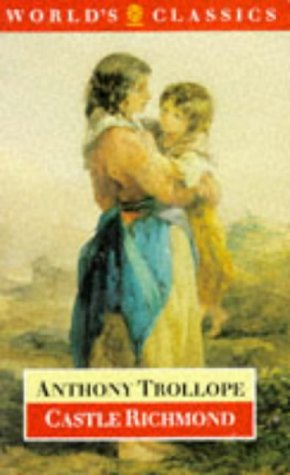December 12, 2023
Our second delving into this lesser-read (probably? I feel overall Anthony Trollope should be read more, and this novel isn’t one of those read even partially enough atm) Irish-set Trollope tale takes us into a space Trollope wrote about better than anyone, the house of an English rector. While our man of the cloth here isn’t one of the book’s main characters, he has enough page time that you’ll come to enjoy his company (his wife’s too, though mostly for her sometimes ridiculousness). The fact that he likes a whisky punch in an evening, certainly makes liking him easier. Oh, don’t miss the Castle Richmond Cocktail Talk Part I, for more book background and brandy (and all the Trollope Cocktail Talks for even more).
But the parlour was warm enough; warm and cosy, though perhaps at times a little close; and of evenings there would pervade it a smell of whisky punch, not altogether acceptable to unaccustomed nostrils. Not that the rector of Drumbarrow was by any means an intemperate man. His single tumbler of whisky toddy, repeated only on Sundays and some other rare occasions, would by no means equal, in point of drinking, the ordinary port of an ordinary English clergyman. But whisky punch does leave behind a savour of its intrinsic virtues, delightful no doubt to those who have imbibed its grosser elements, but not equally acceptable to others who may have been less fortunate.
–Anthony Trollope, Castle Richmond
April 18, 2023
A second Cocktail Talk from the Oxford Book of Ghost Stories (see “The Empty House” Cocktail Talk for a bit more background there), here from a story called “The Taipan,” by the legendary W. Somerset Maugham. An author who has many books I’ve liked, by the by, though this story wasn’t the strongest in the book by a ways, and might not even be a ghost story. Folks can quibble about that. What you can’t quibble about is that the main character can put down a lot, a whole lot, of booze with lunch. I had to include the below, just cause I was so impressed with his ability to walk after the liquid consumed below.
But he smiled, for he felt in an excellent humour. He was walking back to his office from a capital luncheon at the Hong-Kong and Shanghai Bank. They did you very well there. The food was first-rate and there was plenty of liquor. He had started with a couple of cocktails, then he had some excellent Sauterne, and he had finished up with two glasses of port and some fine old brandy. He felt good. And when he left he did a thing that was rare with him; he walked.
— W. Somerset Maugham, “The Taipan”
February 28, 2023
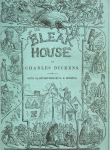 Our second Cocktail Talk from the all-time classic (is that a strange turn of phrase? “All-time” should be inferred in “classic” I suppose) and amazing book of amazingness Bleak House has arrived right here! Be sure you read the Bleak House Part I Cocktail Talk, too, so you feel all caught up and can laugh at my silliness even more. In this here Cocktail Talk below, we are fully-focused on Mr. Tulkinghorn, who is both one of the villains, (there are layers of villainous behavior, but I’d call him the top layer) and then part of one of literature’s first mystery plots. That’s all I’m saying! Read the book. While Mr. T isn’t someone you like, like, his love of old port in the below is for me a tiny redeeming factor in his Dickens-driven makeup. And his name is great, too, like most Dickens names.
Our second Cocktail Talk from the all-time classic (is that a strange turn of phrase? “All-time” should be inferred in “classic” I suppose) and amazing book of amazingness Bleak House has arrived right here! Be sure you read the Bleak House Part I Cocktail Talk, too, so you feel all caught up and can laugh at my silliness even more. In this here Cocktail Talk below, we are fully-focused on Mr. Tulkinghorn, who is both one of the villains, (there are layers of villainous behavior, but I’d call him the top layer) and then part of one of literature’s first mystery plots. That’s all I’m saying! Read the book. While Mr. T isn’t someone you like, like, his love of old port in the below is for me a tiny redeeming factor in his Dickens-driven makeup. And his name is great, too, like most Dickens names.
In his lowering magazine of dust, the universal article into which his papers and himself, and all his clients, and all things of earth, animate and inanimate, are resolving, Mr. Tulkinghorn sits at one of the open windows enjoying a bottle of old port. Though a hard-grained man, close, dry, and silent, he can enjoy old wine with the best. He has a priceless bin of port in some artful cellar under the Fields, which is one of his many secrets. When he dines alone in chambers, as he has dined to-day, and has his bit of fish and his steak or chicken brought in from the coffee-house, he descends with a candle to the echoing regions below the deserted mansion, and heralded by a remote reverberation of thundering doors, comes gravely back encircled by an earthy atmosphere and carrying a bottle from which he pours a radiant nectar, two score and ten years old, that blushes in the glass to find itself so famous and fills the whole room with the fragrance of southern grapes.
–Charles Dickens, Bleak House
November 11, 2022
Our world of drinking options continues to both expand and get smaller, though I realize that sounds fairly impossible. But in a way, it’s true, as our options expand thanks to the availability of more delicious products from around the globe, connecting us to different choices, which in a way has made the globe smaller, as these connections continue. Make any sense? Maybe! A long intro for telling you that I’m happy that we have more port available in the U.S.? Definitely! I’ve always had a fondness for port, probably due to reading so much Anthony Trollope and wishing we had an after-dinner port ritual like the English did once (though glad we’ve dropped other things from that time), but more-so because port’s yummy. I don’t claim to have a deep port knowledge however, which is why you can’t shame me too deeply for not knowing much about Kopke ports – it is, as I recently found out, the oldest port wine house in the world! Founded in the Douro region way way back in 1638 (!), you can imagine how otherworldly their stock of port stocks must be. They make Tawny and White ports, using a single harvest, and aging for as long as possible, which equals the fact that they release wines not only very delicious, but very singular, and very old.
And (don’t hate me for it), I was recently lucky enough to receive some Kopke ports for sampling. They were, to put in bluntly, amazing! As mentioned above, not a port expert, but I can say that sipping these exquisite ports was a treat I’d wish all my friends to experience. Kopke’s lush, layered ports are things to savor. Naturally, when dealing when rare artifacts like these, you’d want to mostly sip them solo, letting every drop spend time alone on the tongue. But, you know, me being me, I had to try one of these ports in a cocktail with others. Great ingredients make great cocktails, after all! I ended up using the Kopke Tawny Port 2012. Tasty but not as dear (we are mixing with it) as some others, it boasts rich flavors, deep fruit notes (plum, fig, a little cherry, whispers of roast orange), with hints of oaky nuttiness and vanilla, and a full body that’s a pleasure to savor. A base to have shine in a cocktail, accenting it with only small amounts of a few other ingredients. For those others, I wanted to play off some of the notes in the port. I started with Sidetrack Nocino (made right here in WA state, and a fine example of the nocino form), whose own rich nuttiness played perfectly, and then wanted more fruit notes. After trying this and that, ended with Clement Creole Shrubb, made on a base of white and aged rhums, bitter orange peels, and spices, whose layered flavors blended in nicely. But even with those fine liquid friends, the drink needed some undertones, still, and so our final ingredient: Scrappy’s Orange bitters, which delivers deep herbally-citrus tones. Altogether, a swell cocktail memorable in taste, and one I think does justice to the legendary Kopke name. Or I hope it does!
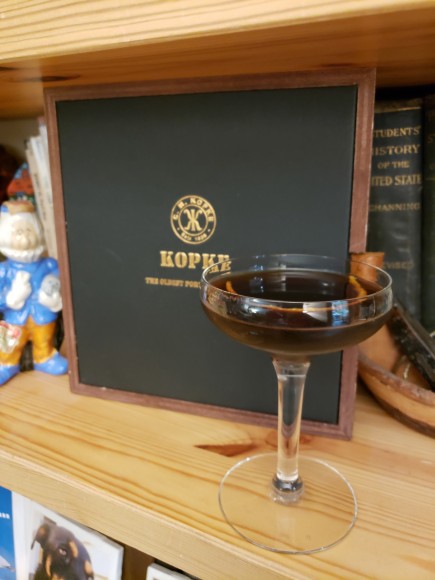
First Port of Call
2-1/2 ounces Kopke Tawny Port 2012
1/2 ounce Sidetrack Nocino
1/2 ounce Clement Creole Shrubb
Dash Scrappy’s Orange bitters
Orange twist, for garnish
1. Fill a mixing glass or cocktail shaker halfway full with cracked ice. Add all but the twist. Stir well.
2. Strain into a cocktail glass. Garnish with the twist. Enjoy.
Tags: bitters, Clement Creole Shrubb, cocktail, Cocktail Recipes, First Port of Call, Friday Night Cocktail, Kopke Tawny Port 2012, Nocino, port, port cocktail, Scrappy's, Scrappy’s orange bitters, Sidetrack Distillery Nocino, Washington distillery, What I’m Drinking
Posted in: bitters, Cocktail Recipes, Liqueurs, Recipes, What I'm Drinking
December 3, 2021
Can you believe it – it’s December, 2021, already. Holy time-moves-quickly! Though, even if we didn’t have calendars and suchlike to alert us to the fact, the weather outside might cause one (in the northern hemisphere, and suchlike) to think through chattering teeth, “I believe it’s December, because the cold has infested my bones.” Or, suchlike. What to do, as time machines are out of the question, currently? I mean, you can’t go back in time to escape the cold, and while putting layers of blanketing devices on your person will perhaps reduce the chill, it certainly isn’t as jolly as a good warm (or hot, even) drink. May I suggest, in this warming manner, Aunt Betsy’ Favorite? It’s a wine-based treat, one fortified as the season demands with port and brandy, and well-spiced (the season also seems to demand this – just look at holiday desserts). It also serves, depending on temperature, temperament, and suchlike, somewhere between 5 and 8 people – and, as well all know, a crowd of pals is a warming thing. So, this is doubly-warming! Take the edge off of December with it, and stay cozy, and suchlike!
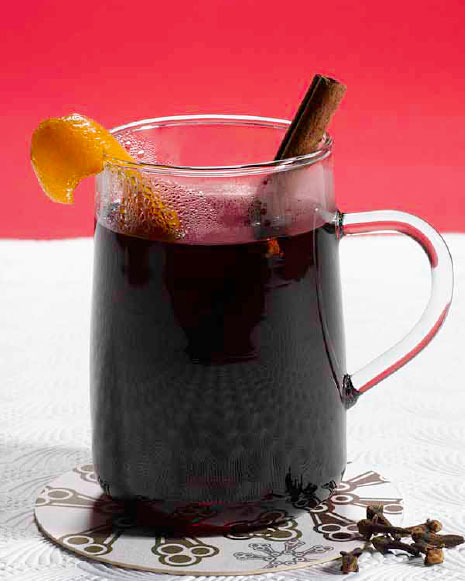
Aunt Betsy’s Favorite, from Dark Spirits
24 ounces red wine (I suggest a Cabernet Sauvignon)
16 ounces tawny port
8 ounces brandy
4 ounces simple syrup
1 orange peel
3 whole cloves
1 stick cinnamon
1. Add all of the ingredients to a medium-size saucepan. Cook on medium heat, stirring regularly, for 10 minutes. You want it to get good and hot, but not start boiling, or even simmering. Reduce the heat midway through the cooking time if needed.
2. Once the 10 minutes have passed and the room smells wonderful, ladle the mix into heavy mugs. Avoid serving the orange peel, cloves, and cinnamon stick if your pals are worried about clunking up their smiles.
Tags: Aunt Betsy’s Favorite, Brandy, Cabernet Sauvignon, cinnamon, cloves, cocktail, Cocktail Recipes, Friday Night Cocktail, hot drink, hot wine punch, orange peel, port, red wine, simple syrup, What I’m Drinking, wine cocktail
Posted in: Brandy, Cocktail Recipes, Dark Spirits, Recipes, What I'm Drinking, Wine
July 6, 2021
 Well, I love me some Anthony Trollope. But everyone knows that. I mean, take a gander at all the past wonderful (I say, humbly), Anthony Trollope Cocktail Talk posts – there are a fair number of them where I wander on about Trollope and reading and re-reading his books. So, my Trollope adoration bonafides are in place, which means it’s okay to say that I’m not 100% sure that I love his large novel Orley Farm. There are parts of it I love, lots. And I believe Trollope himself considered it one of his best (it may have been his favorite), as did a few of his writing contemporaries. And it is a big, Trollopean story, with interesting characters, a plot hook or three, threads that start in multiple spots and are drawn together, and insights and actions that, while taking place in a different time, mirror in many ways how people act today. So, all good! However, there’s something that throws me off a bit about the book. I think in some ways, Trollope (this happens in other books on occasion, too, but here it feels off-putting) begins not to like one of the characters he introduces early (one of the spotlight characters, you could say), and brings in a separate thread, fairly late for him, to introduce perhaps some new characters he’s more fond of – if that makes any sense. Which throws me off somewhat when reading it, as I develop an affection for the earlier character. Anyway, let’s just say it’s not one of my favorite Trollope books, but it’s still awesome, with a plot spinning (in the main, outside of the side trips alluded to above) around a codicil to a will that may or may not be forged. Intrigued? Give it a read! There are also lots of convivial drinking moments, as there are apt to be with our pal Trollope, so I plan on sticking with the book here with some good Cocktail Talking quotes. Starting with the below, which focuses on port and one of the lawyers who take part in our tale, there are a number of lawyers, as you might expect with a book circling round a will.
Well, I love me some Anthony Trollope. But everyone knows that. I mean, take a gander at all the past wonderful (I say, humbly), Anthony Trollope Cocktail Talk posts – there are a fair number of them where I wander on about Trollope and reading and re-reading his books. So, my Trollope adoration bonafides are in place, which means it’s okay to say that I’m not 100% sure that I love his large novel Orley Farm. There are parts of it I love, lots. And I believe Trollope himself considered it one of his best (it may have been his favorite), as did a few of his writing contemporaries. And it is a big, Trollopean story, with interesting characters, a plot hook or three, threads that start in multiple spots and are drawn together, and insights and actions that, while taking place in a different time, mirror in many ways how people act today. So, all good! However, there’s something that throws me off a bit about the book. I think in some ways, Trollope (this happens in other books on occasion, too, but here it feels off-putting) begins not to like one of the characters he introduces early (one of the spotlight characters, you could say), and brings in a separate thread, fairly late for him, to introduce perhaps some new characters he’s more fond of – if that makes any sense. Which throws me off somewhat when reading it, as I develop an affection for the earlier character. Anyway, let’s just say it’s not one of my favorite Trollope books, but it’s still awesome, with a plot spinning (in the main, outside of the side trips alluded to above) around a codicil to a will that may or may not be forged. Intrigued? Give it a read! There are also lots of convivial drinking moments, as there are apt to be with our pal Trollope, so I plan on sticking with the book here with some good Cocktail Talking quotes. Starting with the below, which focuses on port and one of the lawyers who take part in our tale, there are a number of lawyers, as you might expect with a book circling round a will.
Mrs. Furnival in discussing her grievances would attribute them mainly to port wine. In his early days Mr. Furnival had been essentially an abstemious man. Young men who work fifteen hours a day must be so. But now he had a strong opinion about certain Portuguese vintages, was convinced that there was no port wine in London equal to the contents of his own bin, saving always a certain green cork appertaining to his own club, which was to be extracted at the rate of thirty shillings a cork. And Mrs. Furnival attributed to these latter studies not only a certain purple hue which was suffusing his nose and cheeks, but also that unevenness of character and those supposed domestic improprieties to which allusion has been made.
–Anthony Trollope, Orley Farm
December 29, 2020
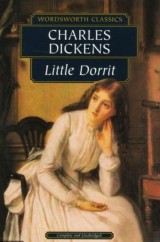 I can’t believe it’s the end of 2020 (a crappy year, as you know, with some redeeming factors), which means there have been, well, 2,020 years plus a few more years of recorded Western history (I’m not here to debate history, and realize I’m generalizing in a big way, but hey, I write about drinks), and in all those years I haven’t had a Cocktail Talk from the immortal Dicken’s classic Little Dorrit! That’s an outrage! What have I been thinking? I haven’t, obviously. While Little Dorrit isn’t my all-time favorite Dickens, it’s definitely in the middle-high range, and as I love most all Dickens books a heck of a lot, that’s saying something! Be sure to read all the Dickens Cocktail Talks to hear more. But be sure to come back, too, cause you don’t want to miss these quotes from Dickens fairly-dark novel that’s unflinching in its views of his society (which is remarkably like ours, in some sad ways), while still being wonderfully comic, character-driven, lyric, and descriptive, with layers of stories that disconnect and then connect again and characters you won’t easily forget. Dickens! And, of course, there are some drinks, as he liked drinks and pubs like few other authors. Our first Little Dorrit Cocktail Talk – and there will be more, don’t you fret – features the hero (in a way of speaking) of the book, Arthur Clennam, sitting down for dinner with a now-much-changed love from his youth, and with her father.
I can’t believe it’s the end of 2020 (a crappy year, as you know, with some redeeming factors), which means there have been, well, 2,020 years plus a few more years of recorded Western history (I’m not here to debate history, and realize I’m generalizing in a big way, but hey, I write about drinks), and in all those years I haven’t had a Cocktail Talk from the immortal Dicken’s classic Little Dorrit! That’s an outrage! What have I been thinking? I haven’t, obviously. While Little Dorrit isn’t my all-time favorite Dickens, it’s definitely in the middle-high range, and as I love most all Dickens books a heck of a lot, that’s saying something! Be sure to read all the Dickens Cocktail Talks to hear more. But be sure to come back, too, cause you don’t want to miss these quotes from Dickens fairly-dark novel that’s unflinching in its views of his society (which is remarkably like ours, in some sad ways), while still being wonderfully comic, character-driven, lyric, and descriptive, with layers of stories that disconnect and then connect again and characters you won’t easily forget. Dickens! And, of course, there are some drinks, as he liked drinks and pubs like few other authors. Our first Little Dorrit Cocktail Talk – and there will be more, don’t you fret – features the hero (in a way of speaking) of the book, Arthur Clennam, sitting down for dinner with a now-much-changed love from his youth, and with her father.
Once upon a time Clennam had sat at that table taking no heed of anything but Flora; now the principal heed he took of Flora was to observe, against his will, that she was very fond of porter, that she combined a great deal of sherry with sentiment, and that if she were a little overgrown, it was upon substantial grounds. The last of the Patriarchs had always been a mighty eater, and he disposed of an immense quantity of solid food with the benignity of a good soul who was feeding some one else.
— Charles Dickens, Little Dorrit
Tags: Arthur Clennam, Charles Dickens, Cocktail Talk, Little Dorrit, Part I, port, she combined a great deal of sherry with sentiment, sherry
Posted in: beer, Charles Dickens, Cocktail Talk, Sherry
December 18, 2020
Just weeks back, I had a Cocktail Talk from Qiu Xiaolong’s excellent Enigma of China, starring Chief Inspector Chen (be sure to read past Qiu Xiaolong Chen Cocktail Talks), in which we had a quote about classic Chinese poet Wang Xizi and a wine poem games he and other poets played, which is about the most amazing thing! Said poet from many years gone by (and the poets who played the wine poem game described) mostly hung out in the Chinese city (as it’s called today), Shaoxing. Now (and trust me, I’m bringing this all together, somewhat), also a few weeks back, some pals of mine from the wondrous Teacher’s Lounge dropped me off a bottle of what, it turns out, is Shaoxing wine! Also amazing. A fermented rice wine, it’s one of (I’ve read) the most famous of the genre, and one often used for cooking as well as drinking – actually, it’s a key cooking ingredient, due to its herbal-ish, funky-ish, fruit-y taste. But I believe that taste means that it can make a swell cocktail, too, and I think in this drink here, The Orchid Canopy (the name’s a shout out to Wang, too!), proves it. I felt something as personality-rich as Shaoxing wine needed a drinking partner that could stand up to it while mingling, and after some testing, came up with: port! Specifically, Sandeman 10-year-old Tawny port, which is a lush number that’s also fruity, with hint of nutty, too. Those notes, with more emphasis on the “fruity” but stone fruity (equaling a little nuttiness, too), are echoed in our third and last ingredient: Rothman and Winter Apricot liqueur. With these three ingredients, we have a cocktail that’s fit for a gathering of poets. Heck, they might even play a cocktail poem game with it!
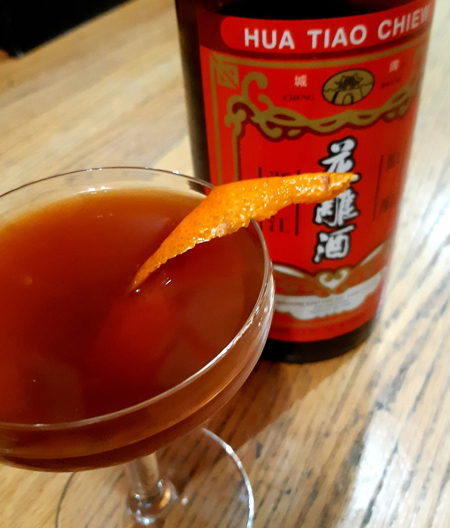
The Orchard Canopy
Cracked ice
1-1/2 ounces Shaoxing rice wine
1-1/2 ounces Sandeman 10-year-old Tawny port
3/4 ounces Rothman and Winter Apricot liqueur
Orange twist, for garnish
1. Fill a cocktail shaker or mixing glass halfway full with cracked ice. Add our three poetic ingredients, and stir well.
2. Strain into a cocktail glass. Garnish with a good-sized orange twist. Drink, write poems, drink more.
Tags: apricot liqueur, cocktail, Cocktail Recipes, Friday Night Cocktail, port, rice wine cocktail, Rothman and Winter Apricot liqueur, Sandeman 10-year-old Tawny port, Shaoxing rice wine, The Orchid Canopy, What I’m Drinking
Posted in: Cocktail Recipes, Liqueurs, Recipes, What I'm Drinking
